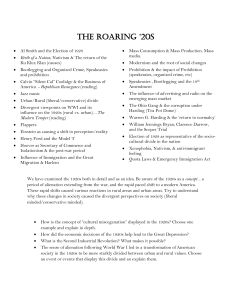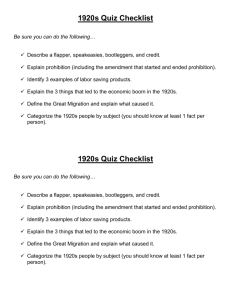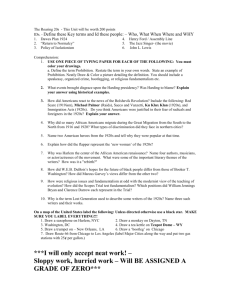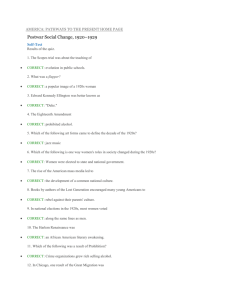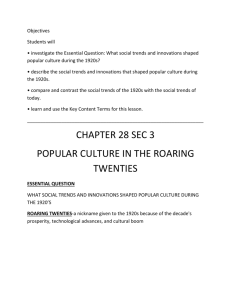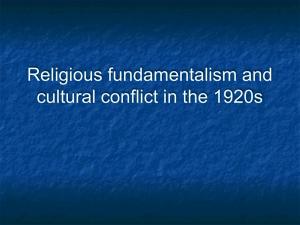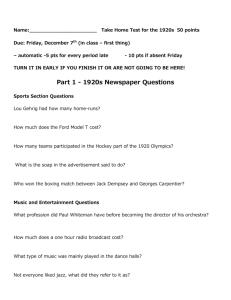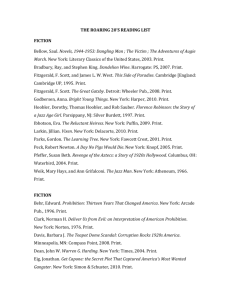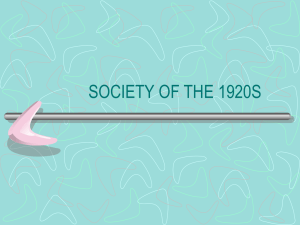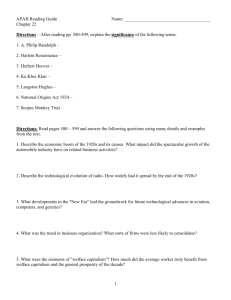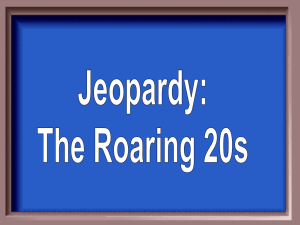Review Sheet
advertisement
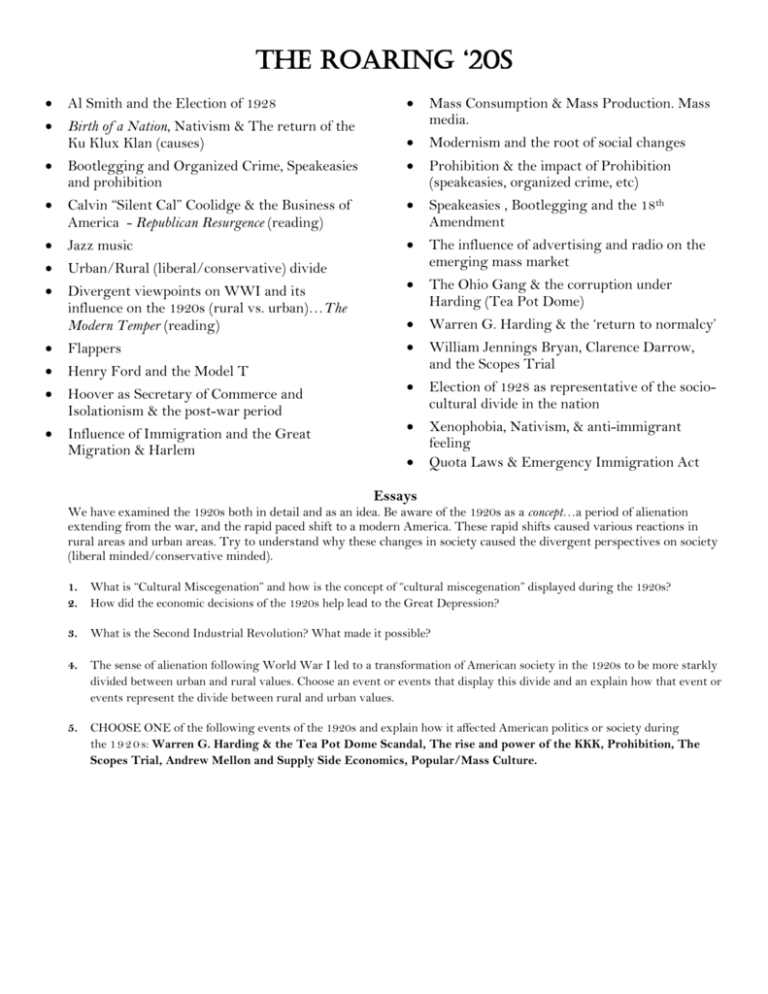
The RoaRing ‘20s Al Smith and the Election of 1928 Birth of a Nation, Nativism & The return of the Ku Klux Klan (causes) Mass Consumption & Mass Production. Mass media. Modernism and the root of social changes Bootlegging and Organized Crime, Speakeasies and prohibition Prohibition & the impact of Prohibition (speakeasies, organized crime, etc) Calvin “Silent Cal” Coolidge & the Business of America - Republican Resurgence (reading) Speakeasies , Bootlegging and the 18th Amendment Jazz music Urban/Rural (liberal/conservative) divide The influence of advertising and radio on the emerging mass market Divergent viewpoints on WWI and its influence on the 1920s (rural vs. urban)…The Modern Temper (reading) The Ohio Gang & the corruption under Harding (Tea Pot Dome) Warren G. Harding & the ‘return to normalcy’ William Jennings Bryan, Clarence Darrow, and the Scopes Trial Election of 1928 as representative of the sociocultural divide in the nation Xenophobia, Nativism, & anti-immigrant feeling Quota Laws & Emergency Immigration Act Flappers Henry Ford and the Model T Hoover as Secretary of Commerce and Isolationism & the post-war period Influence of Immigration and the Great Migration & Harlem Essays We have examined the 1920s both in detail and as an idea. Be aware of the 1920s as a concept…a period of alienation extending from the war, and the rapid paced shift to a modern America. These rapid shifts caused various reactions in rural areas and urban areas. Try to understand why these changes in society caused the divergent perspectives on society (liberal minded/conservative minded). 1. 2. What is “Cultural Miscegenation” and how is the concept of “cultural miscegenation” displayed during the 1920s? How did the economic decisions of the 1920s help lead to the Great Depression? 3. What is the Second Industrial Revolution? What made it possible? 4. The sense of alienation following World War I led to a transformation of American society in the 1920s to be more starkly divided between urban and rural values. Choose an event or events that display this divide and an explain how that event or events represent the divide between rural and urban values. 5. CHOOSE ONE of the following events of the 1920s and explain how it affected American politics or society during the 1 9 2 0 s: Warren G. Harding & the Tea Pot Dome Scandal, The rise and power of the KKK, Prohibition, The Scopes Trial, Andrew Mellon and Supply Side Economics, Popular/Mass Culture. The RoaRing ‘20s
